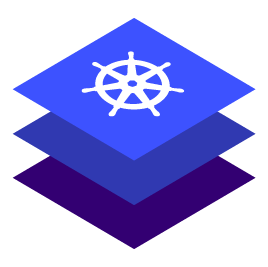GCP: Install Kommander
You have installed the Konvoy component and created a cluster. Now it is time to Install Kommander which will allow you to access the UI and attach new or existing clusters to monitor.
Prerequisites
Ensure you have reviewed all Prerequisites for Install.
Ensure you have a default StorageClass.
Note the name of the cluster where you want to install Kommander. If you do not know the cluster name, use
kubectl get clusters -Ato display and find it.
Create your Kommander Installer Configuration File
Set the environment variable for your cluster:
CODEexport CLUSTER_NAME=<your-management-cluster-name>Copy the
kubeconfigfile of your Management cluster to your local directory:CODEdkp get kubeconfig -c ${CLUSTER_NAME} >> ${CLUSTER_NAME}.confCreate a configuration file for the deployment:
CODEdkp install kommander --init > kommander.yamlIf required: Customize your
kommander.yaml. See Kommander Customizations for customization options. Some of them include:
See Kommander Customizations for customization options. Some of them include:
Custom Domains and Certificates, HTTP proxy, External Load Balancer, GPU utilization, Rook Ceph customization (Pre-provisioned envs), etc.
Enable DKP Catalog Applications and Install Kommander
If you want to enable DKP Catalog applications after installing DKP, see Enable DKP Catalog Applications after Installing DKP.
In the same
kommander.yamlof the previous section, add these values fordkp-catalog-applications:CODEapiVersion: config.kommander.mesosphere.io/v1alpha1 kind: Installation catalog: repositories: - name: dkp-catalog-applications labels: kommander.d2iq.io/project-default-catalog-repository: "true" kommander.d2iq.io/workspace-default-catalog-repository: "true" kommander.d2iq.io/gitapps-gitrepository-type: "dkp" gitRepositorySpec: url: https://github.com/mesosphere/dkp-catalog-applications ref: tag: v2.7.0 If you only want to enable catalog applications to an existing configuration, add these values to an existing installer configuration file to maintain your Management cluster’s settings.
If you only want to enable catalog applications to an existing configuration, add these values to an existing installer configuration file to maintain your Management cluster’s settings.Use the customized
kommander.yamlto install DKP:CODEdkp install kommander --installer-config kommander.yaml --kubeconfig=${CLUSTER_NAME}.conf
Tips and recommendations
The
--kubeconfig=${CLUSTER_NAME}.confflag ensures that you install Kommander on the correct cluster. For alternatives, see Provide Context for Commands with a kubeconfig File.Applications can take longer to deploy, and time out the installation. Add the
--wait-timeout <time to wait>flag and specify a period of time (for example,1h) to allocate more time to the deployment of applications.If the Kommander installation fails, or you wish to reconfigure applications, rerun the
installcommand to retry.
